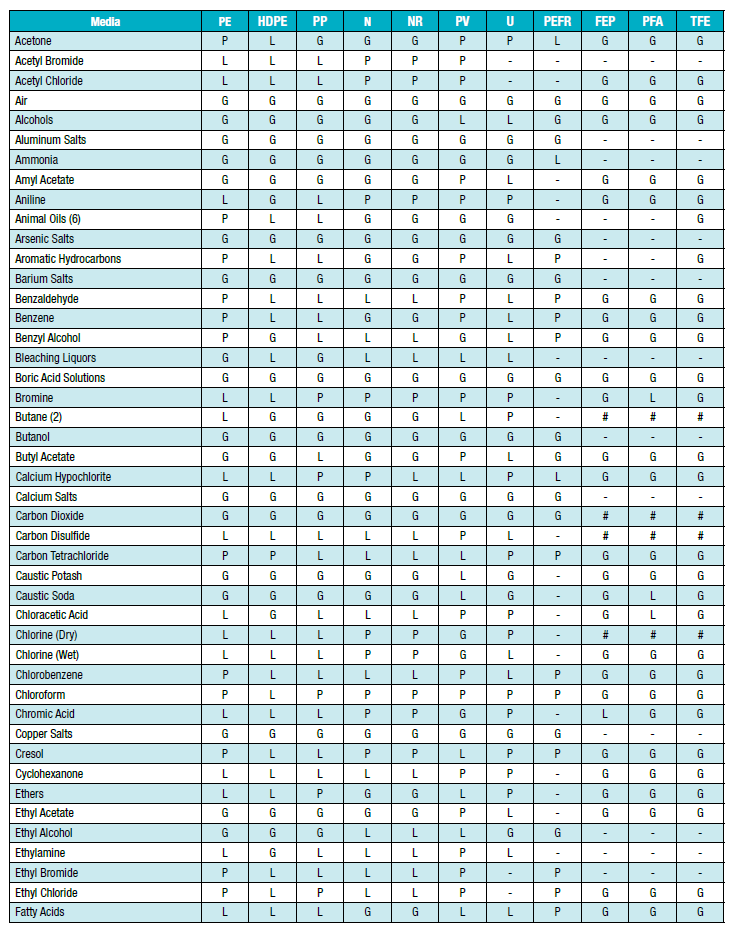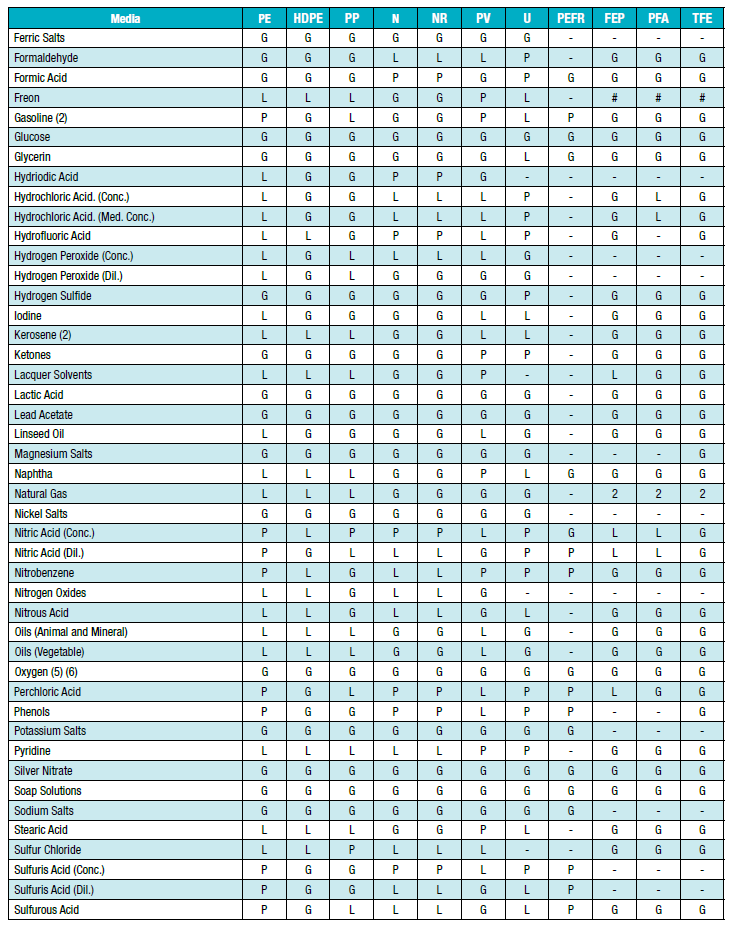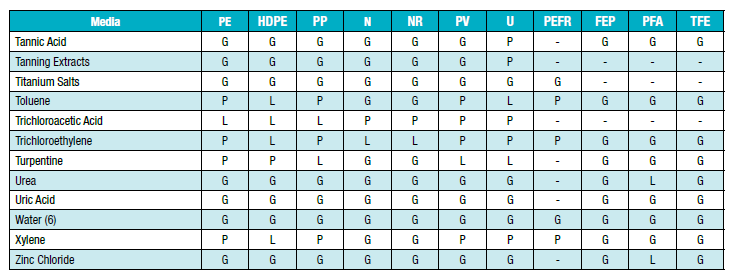PVCスリーブの化学的適合性とは?PVCスリーブの特徴とは?
2022-06-09|
目次: |
PVCスリーブの化学的適合性
以下は、谷騏カタログ2019版に記載されたプラスチックチューブの化学的適合性に基づいています。これには、PVCチューブの化学的適合性も含まれます。本化学的適合性ガイドラインは、過去または今後のカタログ版、公告、その他の出版物に記載された適合性ガイドラインと一緒に使用することはできません。製造プロセスの変化により、プラスチックパイプの化学的適合性は随時変更される可能性があります。これらのチャートを不適切に使用すると、人的被害や財産損失を引き起こす可能性があります。
谷騏チューブに記載された化学品の化学的適合性を確認する方法
-
材料コード表で対応する材料コードを見つけます。
-
媒体とチューブ材料の化学的適合性表で、接触する媒体や化学品を見つけ、等級コード(G、L、P、「-」、「#」)を探します。
-
材料表の下にある適合性等級コードの説明を読みます。。
材料コード表
| GOODGI Thermoplastic Tubing P/N | Material | Code |
| - | High Density Polyethylene | HDPE |
| - | Flexible Nylon | N |
| GPA | Unplasticized Nylon (semi-rigid) | NR |
| - | Linear Low Density Polyethylene | PE |
| GHT, GDW | Flame Resistant Polyethylene | PEFR |
| GR | Polypropylene | PP |
| - | Polyurethane | U |
| - | Fluorinated Ethylene Propylene | FEP |
| - | Perfluoroalkoxy | PFA |
| GND-LL, GND-SS, GND-TT | Polytetrafluoroethylene | TFE |
| GKY | Polyvinylidene Fluoride | PVDF |
媒体とスリーブ材料の化学的適合性表:



適合性等級コードの説明
-
G:良好から優秀 - 膨張、引張、または表面の変化がほとんどない、または全くない。
-
L:臨界または条件付き - 明らかな影響があるが、必ずしも不適合を意味しない。特定の用途については追加のテストを行うことを推奨。硬化や亀裂の可能性など、長期的な影響を評価する必要があります。
-
P:不良または満足できない - 不適合、または実際のテストでは推奨されない。
-
-:未テスト - 相性が不明。
-
#:フルオロポリマーに対して - 優れた耐薬品性を持っているが、浸透する可能性がある。
PVCスリーブの原料紹介
PVCチューブの原料はポリ塩化ビニル(英語:Polyvinyl Chloride、略称:PVC)で、これは塩化ビニルを付加重合反応によって得た高分子材料です。ポリエチレンおよびポリプロピレンに続いて、最も広く生産されている合成樹脂ポリマーの第三位にあたります。PVCの化学構造は -CH₂-CHCl-CH₂-CHCl-CH₂-CHCl- です。ポリ塩化ビニルは、管状に加工される際に2種類の基本的な形式があります:硬質と柔軟です。硬質形式のポリ塩化ビニルは水道管などに使用されます。柔軟性は可塑剤(最も一般的にはフタル酸エステル)を添加することによって実現されます。この形式では、押出(エクストルージョン)によってホースやケーブルの外被などに使用され、ゴムの代替として多くの用途に使われています。谷騏が製造するPVCチューブはこのカテゴリーに属します。
PVCスリーブの特徴と用途
-
耐電圧
-
耐候性
-
耐高低温
-
耐曲げ性
-
耐油性
自動車のハーネス、モーター、電線接続部の絶縁および保護に広く使用されています。PVCチューブはハロゲンを含んでいますが、優れた耐老化性能により、過酷な環境での使用においては他の素材に取って代わることが難しいです。